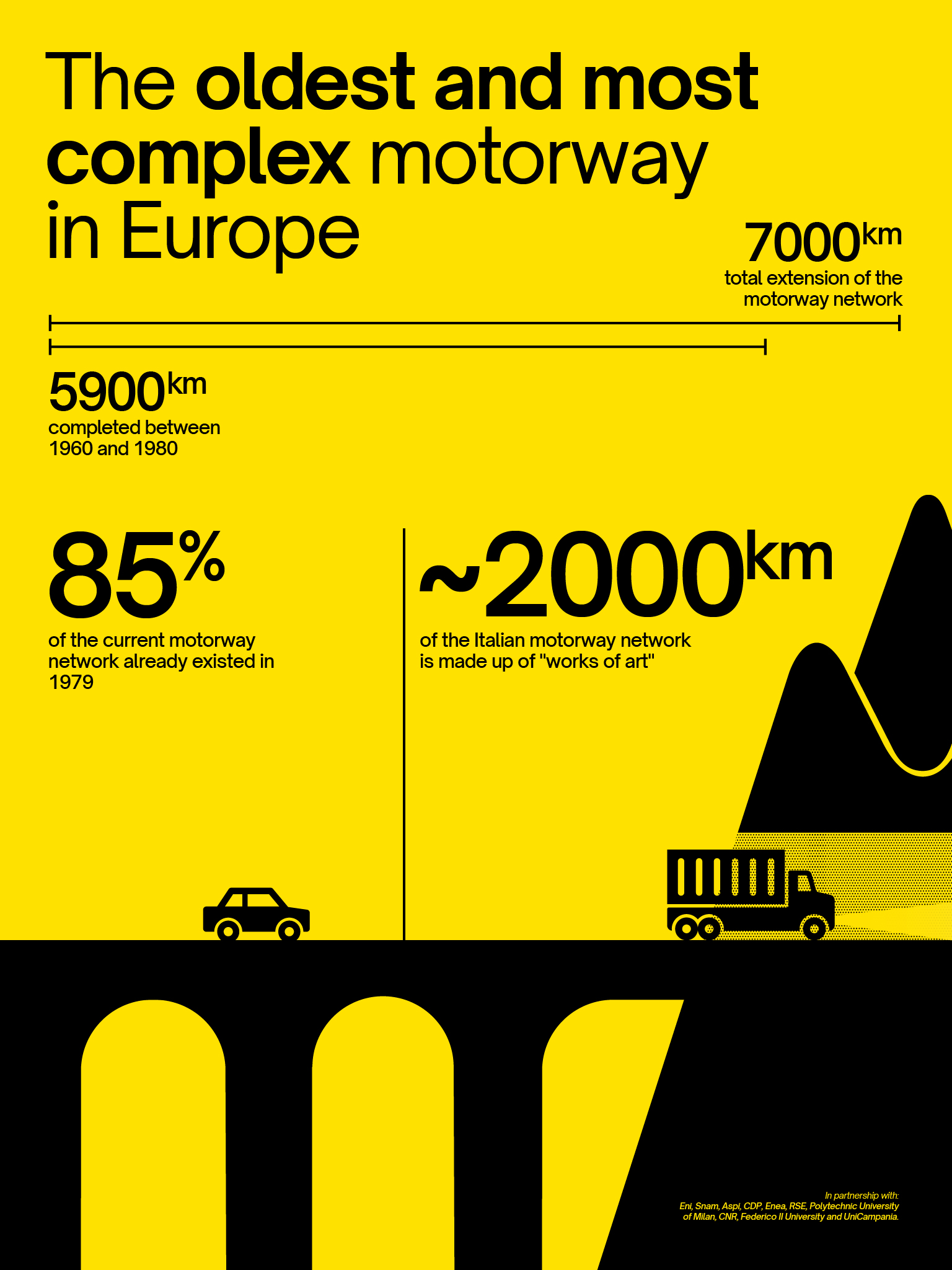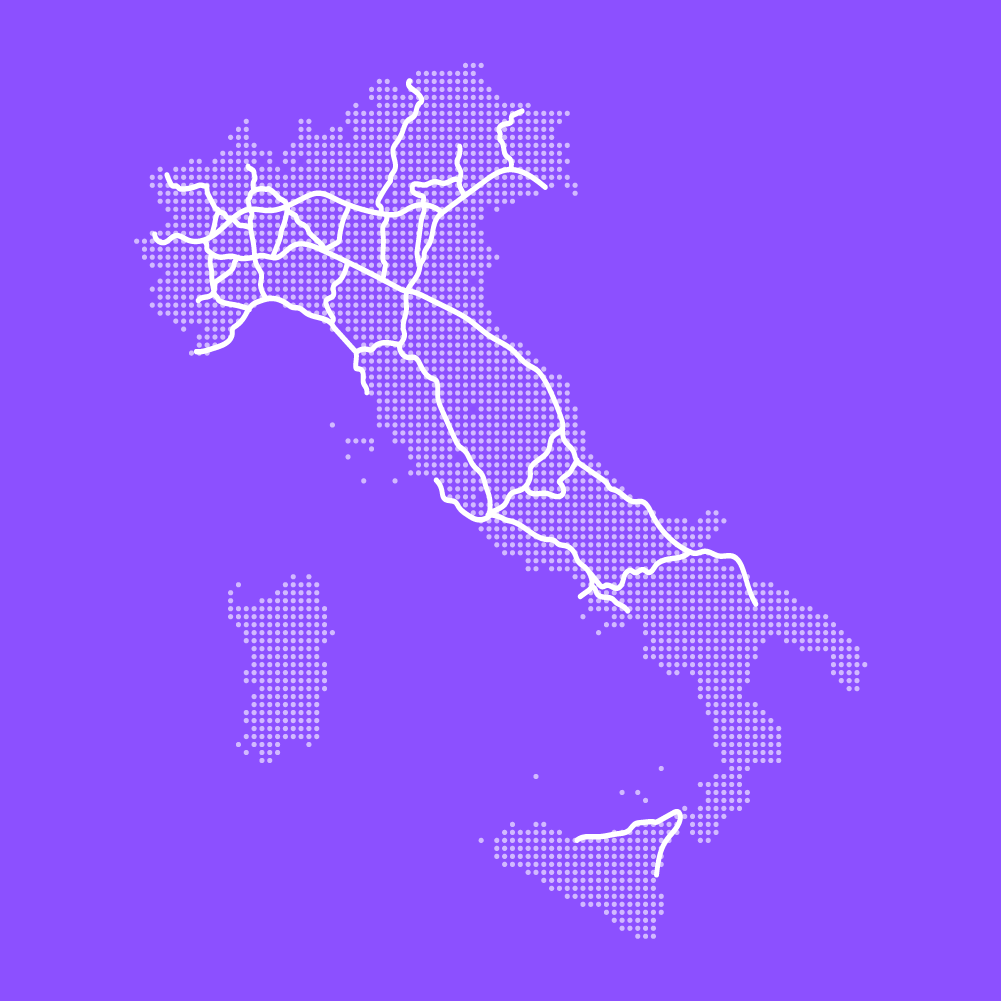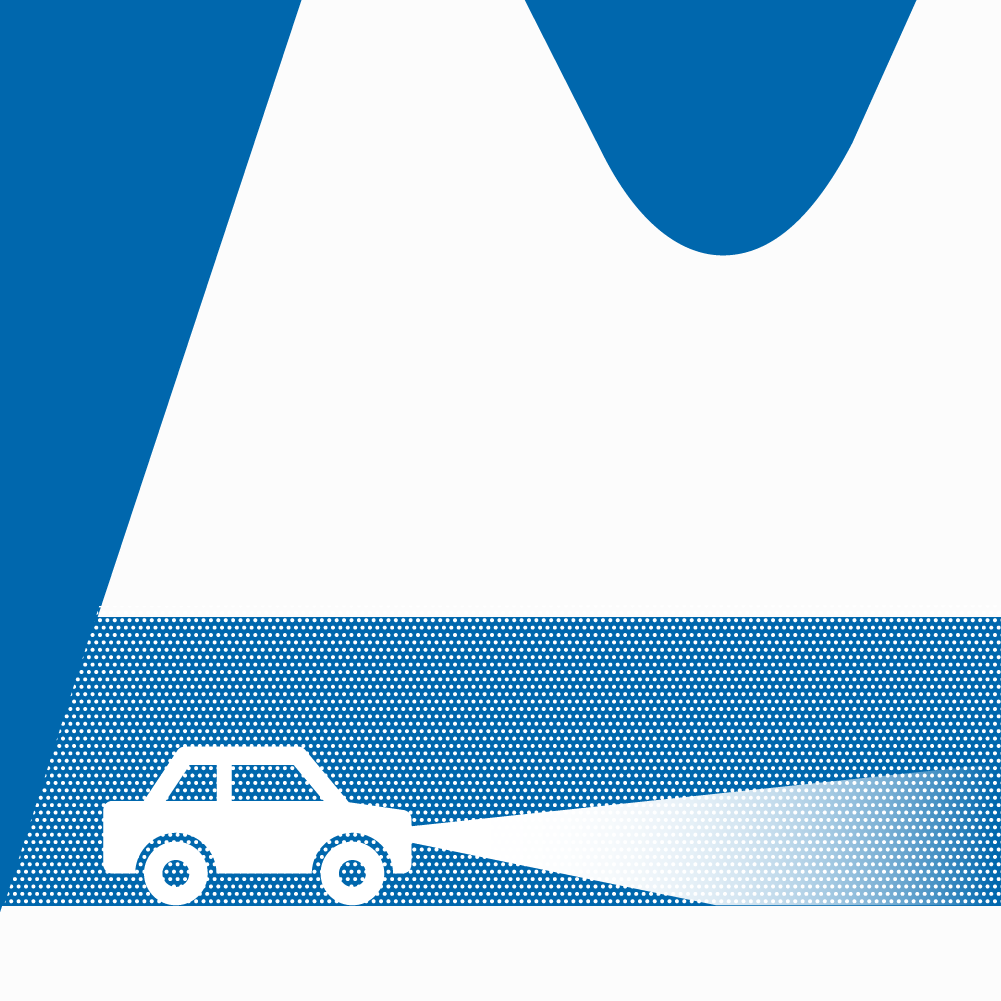The oldest and most complex network in Europe
Italian motorways are the oldest in Europe, with a number of viaducts, bridges, and tunnel that is much higher than the European average. Furthermore, they are the most stressed, as approximately 40,000 vehicles run along each single Km every day.
The Great War had been over for just under six years when the King of Italy embarked on a short journey that was to set a world record. On 21 September 1924, Victor Emmanuel III, on board his Lancia Trikappa, travelled the few kilometres between Lainate and Gallarate, north of Milan. It was the inaugural section of the future Milano-Laghi, the construction of which had begun 15 months earlier, when Lombard engineer Piero Puricelli set up the Società Anonima Autostrade to create a direct link between Milan, Varese and Como. During the inauguration ceremony, no one could have imagined that this short concrete section would go down in history as the world’s first motorway, the embryo of Italian motorways.
Motorways in Italy: a century of history
A few months after the inauguration of the first section, the Milano-Laghi with its 45 kilometres was completed. In the meantime, plans began to create the main branches of the future Italian motorways, which in the following decade extended to 500 kilometres. After the setback of the Second World War, the project resumed at full speed: in 1956 the Milano-Napoli construction site started and eight years later the Autostrada del Sole was a reality. In the meantime, the Mont Blanc Tunnel was built and in 1965 it was inaugurated. By the end of the 1970s, 85% of today’s 7,000 km motorway network was already completed.
The number of vehicles and traffic on the roads increased significantly (by 200%) over time. However, the development of the network was halted by a law from 1975. This law, which was passed during the energy crisis, put a stop to the construction of new motorways. The law was repealed 25 years later. Since the early 2000s, plans to expand transport capacity by adding third and fourth lanes on around 2,000 kilometres have resumed.
The numbers of Italian motorways
Italian motorways are the oldest in Europe: by the end of the 1970s, 85% of the network had already been built, compared to 57% in Germany, 32% in France and 12% in Spain. The country has the second largest surface area in Europe, and our network reflects the unique orographic characteristics of the peninsula. In an area where 75% of the land is mountainous and hilly, motorways have to navigate through a complex network of roads and cross valleys and mountains using a higher number of viaducts and tunnels compared to the European average: in fact, Italy boasts the highest number of motorway bridges, with a total length of 1,200 kilometres. This figure is significantly greater than that of Germany, which has only 260 kilometres of motorway bridges, and Spain, which has 229 kilometres. However, when it comes to motorway tunnels, our country has half the amount found throughout Europe, with a total length of 500 kilometres. This distance is slightly less than the distance between Milan and Pescara as the crow flies. Due to its geological instability, Italy experiences two thirds of Europe’s landslides, occurring over an area of almost 24,000 km2, namely 8% of the territory.
In addition to being the oldest and most fragile on the continent, Italian motorways are also the busiest: around 40,000 vehicles pass through each kilometre of the network every day, compared to 27,000 in France and 17,000 in Spain. The figure for haulage is even sharper: out of the 40,000 vehicles, 10,000 are lorries, whereas in France and Spain there are 3,000 and 1,000 lorries respectively.
A plan to modernise Italian motorways
Italian motorways are in urgent need of modernization and upgrading due to their fragile, outdated, and overloaded condition. This is not only necessary to meet the immediate requirements but also to prepare for future scenarios, such as the intensification of extreme weather events. Such scenarios have the potential to put significant strain on the infrastructure, which could have negative consequences on essential macroeconomic indicators such as GDP, company turnover, manufacturing added value, employment, and the tourism industry. Unfortunately, some scenarios have not been fully included in legislation or considered in a general strategy. Recently, the issue of road network obsolescence has been addressed in the EU. Similarly, in Italy, the degradation of the infrastructure built after the war which is nearing the end of its useful life has been discussed.
Shortly, many viaducts and tunnels in Italy may be the subject of a regenerating maintenance plan aimed at extending their useful life for at least 30-50 years. In such a way, the Italian motorways will continue to serve as the backbone of the country’s economy.























